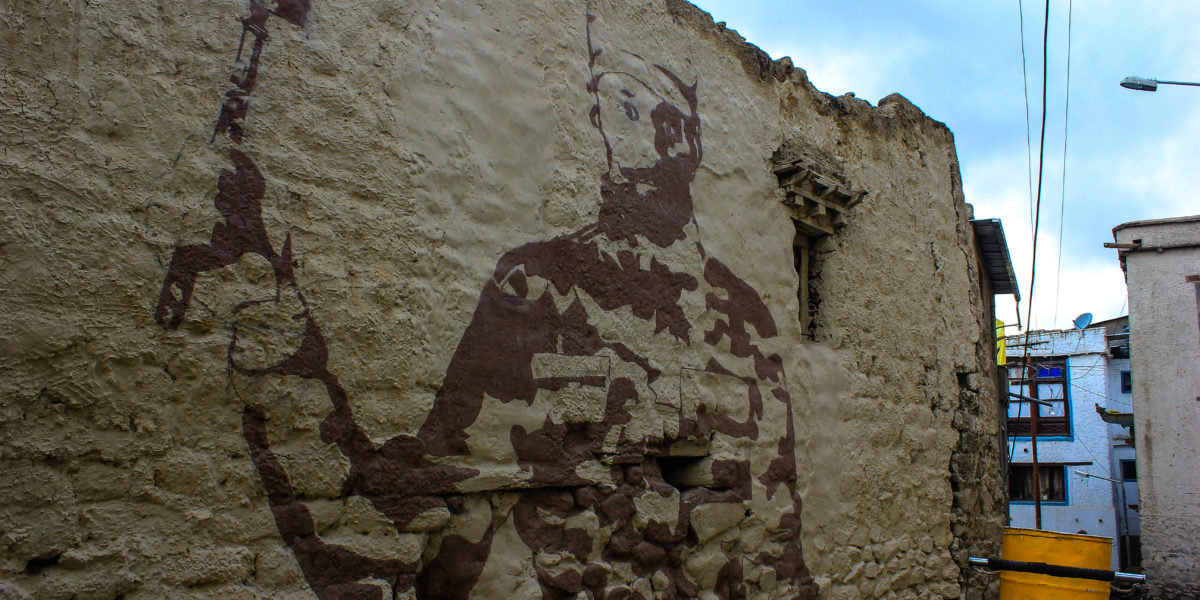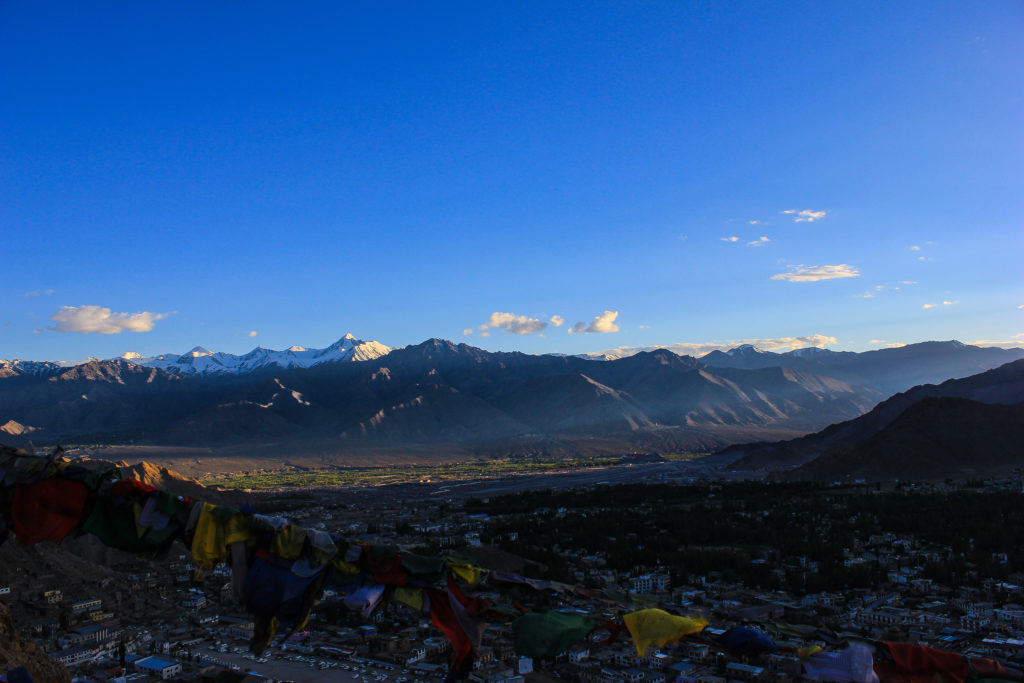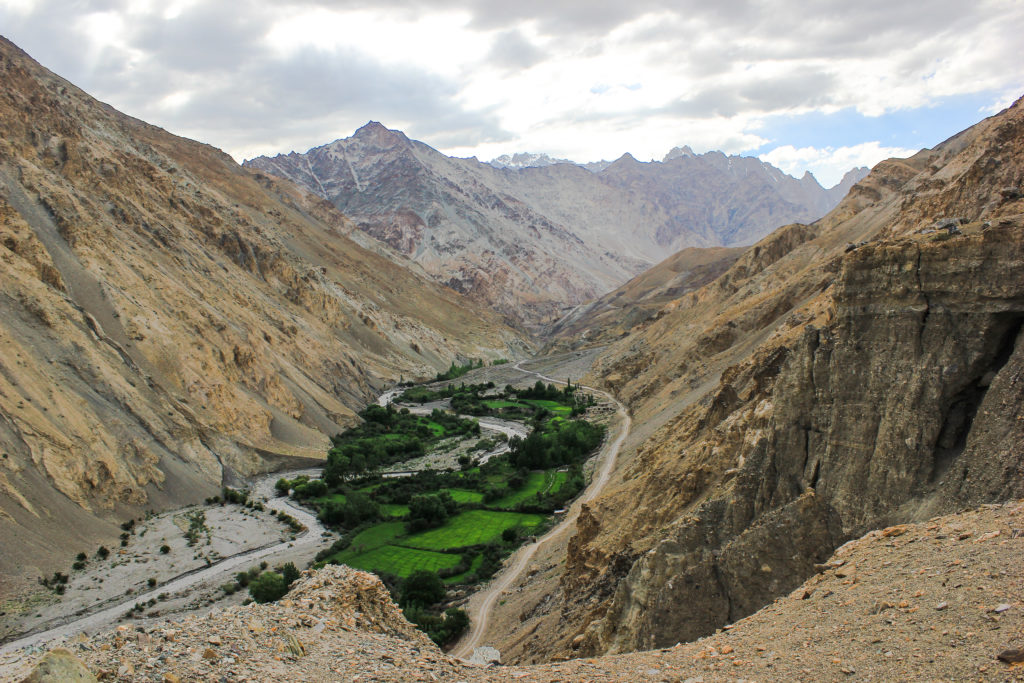
Jammu & Kashmir: A custody case
On byFrom the foothills of the Indian subcontinent to the high Tibetan Plateau, the Himalayas are home to a diverse amount of resources and ethnocultural communities. Prior to the Independence of India and the creation of North India’s political boundaries, the princely state of Jammu and Kashmir encompassed a large amount of the western Himalayan range. Of the 595,000 km² of Himalayan region, the historical princely state of Jammu and Kashmir stretched 222,440km²1 2.

Due to poorly executed colonial withdrawal and the placement of strategic boundaries, the divided regions are now in territorial conflict over limited resources and cultural segregation. Different regions have their own unique landscapes and traditions; often times these newly found boundaries either divide these regions and separate traditional trade routes, which limits access to resources and cultural locations, or join multiple cultures and communities where the majority government would often bias their laws towards one culture.
Historically, this is considered one of history’s longest conflicts that is still ongoing present day. Although this conflict is no different and neither more influential when compared to other international issues, it is still important due to its implications on a local and global scale. Locally, this can be compared with the Akwesasne territory of the Mohawks and its socio-geographical interactions with Canada and the United States of America; on a global level, this can be compared to the distribution of East and West Germany after 1945, and its implications between the rise of power between the rival countries of the United States of America and the Soviet Union.


History
In the aftermath of the first Anglo-Sikh war, the Sikhs and the East India Company had signed the Treaty of Lahore (1846) in which the Sikhs had ceded the Kashmir region and areas of Punjab such as Jullundur (Jalandhar) and Hazara 3. Due to the British’s lack of resources in overseeing the annexed land, the Treaty of Amritsar (1846) was signed between Gulab Singh of Jammu and the East India Company, to which Kashmir was sold to the now British-recognized Maharaja Gulab Singh and founder of the Dogra dynasty (under British protection)4. The Princely state of Jammu and Kashmir was then created and comprised of areas such as Hunza, Nagar and Gilgit5.
After World War 2, the aftermath caused the British to withdraw from their colonies. The Act (1947) dissolved all princely states and allowed the British to divide British India into two separate dominions: Pakistan and India, to which the ‘native princes’ of each princely state allied themselves within their dominion6. The Maharaja of Jammu and Kashmir at the time wanted to avoid state accession to both dominions, however due to tribal attacks supported by the Pakastani government, The Maharaja signed the Instrument of Accession Treaty (1947) with India for militarized support so-long as Jammu and Kashmir remained autonomous7. This treaty remains controversial as its political borders are still faint, along with many terrorist attacks happening along the state’s perimeter bordering Pakistan and China8. However, due to the autonomy, their constitution allows Jammu and Kashmir to participate in negotiations as a separate entity along India and among the neighboring countries.
The legislation that allowed autonomy for many years was Article 370 (1950). On October 2019, the majority of Article 370 was dissolved and the Jammu and Kashmir state lost its political power, autonomy, and constitution9. Now that India has full political and militarized control, tensions are rising internally as many see this as an attack on freedom and religion, and externally as Pakistan and China prepare to defend what they believe to be part of their land.

Resources
Hydro
The Himalayas are known for their abundance of glaciers. As climate change continues, rising temperatures will continue melting glaciers and the limited amount of fresh water available will soon diminish into nothing. As of now, fresh water is the ‘new gold’. The Indus river, which flows from Tibet, Jammu & Kashmir / India, and Pakistan, is one of the longest rivers in Asia and supplies water for agriculture, livestock, and livelihood utilities10. As resources and energy are limited in secluded areas in the himalayan region, hydro power becomes very appealing. During the century of colonial rule, the Indus river provided Punjab with the world’s most extensive irrigation system; after the partition of 1947 that split Punjab to now Pakistan and India, there are still disputes to who owns the river11. After the analysis and suggestion by David Lilienthal, the World Bank facilitated what we now call the Indus Water Treaty (1960).

Agriculture
There are still criticisms from Pakistan that India is not upholding the treaty’s agreement—this includes the Baglihar Dam and the Kishangana Project. As of now, Pakistan still relies on the world’s largest contiguous irrigation system. This includes 3 major reservoirs, 45 major irrigation canal commands, and 12 inter-river link canals, all while filling irrigated lands that support up to 90% of the country’s agriculture production12. Data shows that the water diverted from dams in Jammu and Kashmir, including the seasonal 8 month long drought, will heavily impact the farmers of Pakistan11. India, in revoking Article 370, has been perceived by Pakistan as instigating intimidation for trade and power.

Mining
The scrapping of the special status has also left external stakeholders outside of India competing for the final bids to mine in Jammu and Kashmir. Once revoked, India has full authority over the lands, which creates uncertainty for mining companies that have yet placed their feet on the soil of profit. Limestone, Coal, Marble, and other gems are its main profiters. Currently there is an estimated 6081 mt of Limestone, 9.5 million tonnes of Coal, and 400 M cubic meters of marble within the region13. These days, bids for mining licenses are distributed online. Before the Article was dissolved, Jammu and Kashmir experienced frequent internet disconnections which were temporary. During the constitutional change, the region experienced a complete shutdown (no one entering or leaving) which included the internet being disabled for months. After the dust settled, it was partially running on 2G networks; locals who would manually offer their bids were technically disadvantaged due to the learning curve of online processes as well as the inferior tech infrastructure compared to external stakeholders outside of the rest of India14. As climate change intensifies and resources become sparse, countries are left fighting for economic growth at the cost of sustainability and livelihood.


Culture & Politics
In the Himalayas, it would seem the majority that live there practice buddhism. According to the Census 11 data, Jammu and Kashmir are majority muslim by 68.3%, while only 0.9% practice Buddhism. On top of revoking Article 307, the Hindu nationalist Bharatiya Janata Party pushed a bill through Parliament called Citizenship Amendment Bill (CAB)15. This bill provides expedited immigration for people fleeing religious persecution from Pakistan, Bangladesh, and Afghanistan; this bill excludes Muslims16. This new bill, coupled with revoking Jammu and Kashmir’s special status, have threatened those who practice Islam, especially those recently migrated from war-torn areas. The recent lockdown and militarization after article 370 has increased tension on locals even though the government stated that their presence is to fight military insurgents and terrorist17.
Another adjacent country whose border stirs conflict is China’s. Aksai Chin, a region East of present day Jammu and Kashmir, was originally part of the Princely State but is now administered by China, which connects to Xinjiang and Tibetan province. The Border between Jammu and Kashmir and Aksai Chin is known as the Line-of-Actual Control18. Before Article 370, India and China would frequently set up new military posts and tents to administer the region, often causing incursions with each other. Most of the activities now are the deployment of defence apparatuses. Tensions are rising as China has criticized India’s forceful union of the Northern state since they have interest in the land19. China claims that the act was to solidify India’s unlawful territorial claim, however India’s response was that the matter was an internal matter belonging to India with no external implications. With India’s increase of military activity in the North, it does not seem to fit the story— especially with China trying to dominate the United States of America for economic power, and growing its geographical influence (Belt-and-Road Initiative). India is seen as a next-door competitor with whom China is rivaling20.
More to Come…
On environmental, socio-cultural, and economic grounds, the territorial region of Jammu and Kashmir is considered history’s longest ongoing conflict. With many internal and external stakeholders involved, disagreements are intertwined as a part of daily life. It is almost as if all colonial reigns have fallen into disarray. As resources diminish and the economy becomes more accessible to the global market, greed will consume what’s remaining and fear will divide communities. These circumstances are very unfortunate for those living between the borders. They used to say, “the sun never sets on the British Empire”, but the longer you gaze at the sun, you will be rewarded with illumination at the cost of foresight.

For additional pictures of Jammu and Kashmir, check out this “Gallery”
Footnotes
1. Chatterjee, S. P., and B. C. Bishop. 2019. Himalayas. Britannica.
2. Henige, D.P. 2004. Princely States of India: A Guide to Chronology and Rulers. Orchid Press.
4. Panikkar, K. M. 1930. Gulab Singh 1792 1858. Martin Hopkinson Limited
8. Jammu Kashmir News. The Economic Times.
9. Sharma, N. 2019, Kashmir loses article 370 turns indian union territory today. Quartz india.
10. Ahmad, N., Lodrick, D. O. 2019. Indus River. Encyclopedia Britannica.
13. Jammu and Kashmir. 2019. Major and Minor Minerals. Department of Geology and Mining.
15. Victor, D. 2019. Why People Are Protesting in India. The New York Times.
16. Regan, H. 2019. India passes controversial citizenship bill that excludes Muslims. CNN.
17. Hashmi, S. 2019. ‘Don’t beat us, just shoot us’: Kashmiris allege violent army crackdown. BBC.
20. Kuo, L., and N. Kommenda. 2018. What is China’s Belt and Road Initiative? The Guardian.